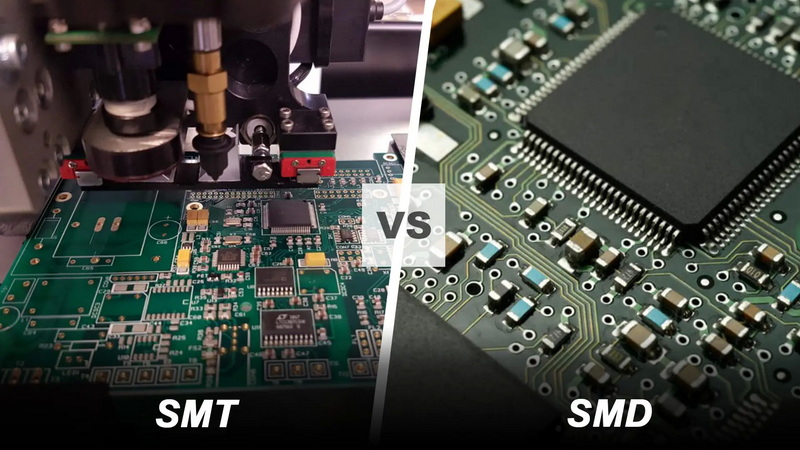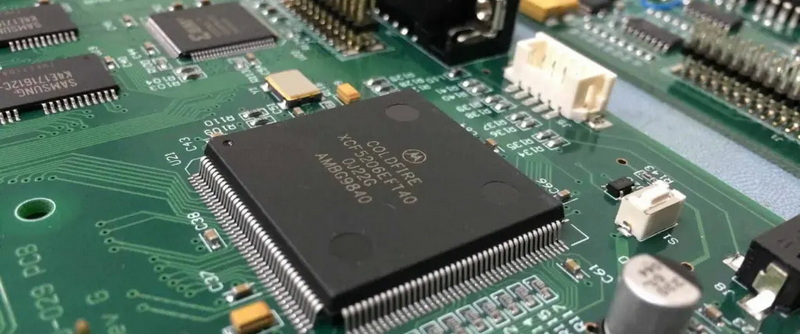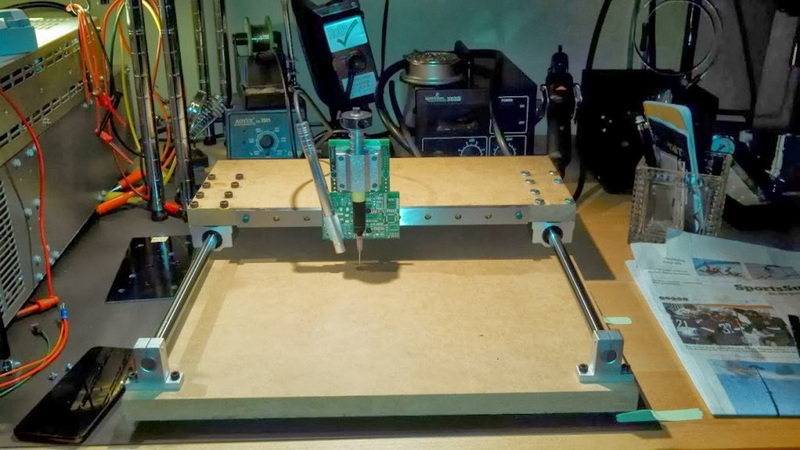Content Menu
● Understanding SMT, SMD, and PCB
● Key Advantages of SMT in Modern Electronics
>> 1. Miniaturization and Higher Component Density
>> 2. Improved Electrical Performance and Signal Integrity
>> 3. Cost-Effectiveness and Manufacturing Efficiency
>> 4. Enhanced Reliability and Mechanical Performance
>> 5. Greater Design Flexibility
>> 6. Reduced Weight and Environmental Impact
>> 7. Simplified PCB Design and Assembly Process
● SMT vs. Through-Hole Technology (THT) Comparison
● Applications Benefiting from SMT
● Challenges and Considerations
● Future Trends in SMT and PCB Technology
● Conclusion
● FAQ
>> 1. What is the main difference between SMT and through-hole technology?
>> 2. Why is SMT preferred for high-frequency applications?
>> 3. Can SMT components be mounted on both sides of a PCB?
>> 4. How does SMT reduce manufacturing costs?
>> 5. Are SMT solder joints as reliable as through-hole joints?
Surface Mount Technology (SMT) has become the cornerstone of modern electronics manufacturing, fundamentally transforming how printed circuit boards (PCBs) are designed and assembled. By mounting components directly onto the surface of PCBs, SMT enables higher density, improved electrical performance, and faster production cycles compared to traditional through-hole technology. This article explores the comprehensive advantages of SMT, focusing on its impact on SMT components (SMD), PCB design, and manufacturing efficiency.

Understanding SMT, SMD, and PCB
Before delving into the advantages, it is essential to understand the key terms:
- SMT (Surface Mount Technology) refers to the method of placing electronic components directly on the surface of a PCB rather than inserting leads through holes.
- SMD (Surface Mount Devices) are the smaller components designed specifically for SMT, featuring flat leads or terminations for soldering onto PCB pads.
- PCB (Printed Circuit Board) is the base on which electronic components are mounted and interconnected.
The synergy of SMT, SMD, and PCB technology drives innovation in modern electronics, enabling compact, reliable, and cost-effective devices. SMT has effectively replaced through-hole technology in most applications due to its numerous benefits.
Key Advantages of SMT in Modern Electronics
1. Miniaturization and Higher Component Density
One of the most significant advantages of SMT is the ability to miniaturize electronic devices. SMT components (SMDs) are much smaller than their through-hole counterparts because they do not require long leads or holes drilled through the PCB. This size reduction allows:
- Compact Device Design: Manufacturers can design smaller, lighter, and more portable devices without sacrificing functionality. This is crucial for consumer electronics like smartphones, tablets, and wearable devices.
- Higher Component Density: SMT enables placing components on both sides of the PCB, increasing the number of components per unit area. This is essential for complex circuits where space is limited.
- More Complex Circuits: The smaller size and higher density allow engineers to design more sophisticated circuits with enhanced capabilities on the same or smaller PCB footprint.
The elimination of drilled holes also reduces PCB manufacturing complexity and cost, as fewer mechanical processes are involved.
2. Improved Electrical Performance and Signal Integrity
SMT significantly enhances electrical performance due to shorter lead lengths and reduced parasitic effects:
- Lower Parasitic Inductance and Capacitance: Shorter leads and direct mounting reduce unwanted inductance and capacitance, which can degrade signal quality.
- Better High-Frequency Performance: SMT is ideal for high-frequency applications such as RF circuits, telecommunications, and high-speed digital systems because it minimizes signal distortion and delay.
- Improved Signal Integrity: Reduced signal path lengths and more consistent solder joints help maintain signal integrity, leading to more reliable and faster electronic devices.
These electrical advantages are critical for modern electronics that demand high-speed data processing and communication.
3. Cost-Effectiveness and Manufacturing Efficiency
SMT supports highly automated assembly processes, which bring several cost advantages:
- Faster Production Speeds: Automated pick-and-place machines can place thousands of components per hour, significantly reducing production time.
- Reduced Labor Costs: Automation minimizes the need for manual soldering and component placement, lowering labor expenses.
- Lower Material Costs: SMT PCBs require fewer drilled holes and less substrate material, reducing raw material consumption.
- Decreased Waste: Precise automated placement reduces errors and scrap rates, improving yield and lowering overall costs.
These factors make SMT ideal for both prototype development and large-scale mass production, ensuring consistent quality and cost savings.
4. Enhanced Reliability and Mechanical Performance
Contrary to early concerns about the mechanical strength of SMT solder joints, modern SMT assemblies offer excellent reliability:
- Resistance to Vibration and Shock: SMT solder joints are generally more resistant to vibration and mechanical shock, making them suitable for automotive, aerospace, and industrial applications.
- Thermal Cycling Performance: SMT components and solder joints withstand thermal expansion and contraction cycles better, reducing the risk of joint fatigue and failure.
- Consistent Quality: Automated soldering processes, such as reflow soldering, produce uniform and reliable joints, minimizing defects and improving product lifespan.
While through-hole technology still has advantages for heavy or high-stress connectors, SMT provides sufficient mechanical robustness for most electronic components.
5. Greater Design Flexibility
SMT offers unparalleled flexibility in PCB and product design:
- Double-Sided PCB Assembly: Components can be mounted on both sides of the PCB, effectively doubling the available space for circuitry.
- Fine-Pitch Components: SMT supports very small pitch components (the distance between leads), enabling the use of advanced ICs and microprocessors.
- Multi-Layer PCBs: SMT integrates well with multi-layer PCB designs, allowing complex routing and interconnections within a compact form factor.
- Wide Component Variety: SMT accommodates a broad range of components, from tiny resistors and capacitors to complex integrated circuits and modules.
This design freedom empowers engineers to innovate and optimize electronic devices for performance, size, and cost.
6. Reduced Weight and Environmental Impact
The smaller size and lighter weight of SMT components contribute to:
- Lighter Electronic Devices: Critical for portable electronics, aerospace, and automotive applications where weight reduction improves performance and energy efficiency.
- Lower Material Usage: SMT reduces the amount of PCB substrate and solder material needed, decreasing environmental impact.
- Energy Efficiency in Manufacturing: Automated SMT assembly lines consume less energy per unit produced due to faster throughput and less manual intervention.
These factors align with growing industry trends toward sustainable and environmentally friendly electronics manufacturing.
7. Simplified PCB Design and Assembly Process
SMT simplifies the overall PCB design and assembly process:
- No Need for Drilled Holes: Eliminating through-holes reduces PCB fabrication steps and cost.
- Simpler Routing: Without the need to route traces to through-holes, PCB layouts can be more straightforward and efficient.
- Faster Assembly: Automated pick-and-place and reflow soldering streamline the manufacturing process, reducing lead times.
This simplification accelerates time-to-market for new products, a critical advantage in competitive industries.

SMT vs. Through-Hole Technology (THT) Comparison
| Feature | SMT (Surface Mount Technology) | THT (Through-Hole Technology) |
| Component Size | Very small, compact SMDs | Larger components with leads |
| PCB Size and Density | High density, smaller PCBs, double-sided mounting | Lower density, usually single-sided |
| Assembly Speed | Very fast, automated placement | Slower, often manual or semi-automated |
| Electrical Performance | Superior at high frequencies, lower parasitics | Higher lead inductance and capacitance |
| Mechanical Strength | Good for most applications, weaker for heavy parts | Strong mechanical bonds, better for connectors |
| Cost Efficiency | Lower cost for high-volume production | Higher cost, better for prototypes or rugged use |
| Usage | Dominant in modern electronics (>90% PCBAs) | Niche use in connectors, legacy designs |
This comparison highlights why SMT is the preferred technology in modern electronics manufacturing.
Applications Benefiting from SMT
SMT's advantages have made it the dominant assembly technology across multiple sectors:
- Consumer Electronics: Smartphones, laptops, tablets, and wearables rely heavily on SMT for compactness, performance, and cost efficiency.
- Automotive Electronics: Advanced driver-assistance systems (ADAS), infotainment, and engine control units leverage SMT for reliability and miniaturization.
- Medical Devices: Portable monitors, diagnostic tools, and implantable devices benefit from SMT's small size and high reliability.
- Industrial Automation: IoT devices, robotics, and control systems use SMT for scalability, durability, and high-density PCB designs.
- Telecommunications: Network equipment and RF modules require SMT for high-frequency performance and compact form factors.
The versatility and performance of SMT make it indispensable in modern electronics manufacturing.
Challenges and Considerations
While SMT offers numerous advantages, it also presents challenges that manufacturers must address:
- Placement Precision: The small size of SMDs demands highly accurate pick-and-place machines and precise PCB design to avoid misalignment.
- Inspection Complexity: Small solder joints require automated optical inspection (AOI), X-ray inspection, and other advanced quality control methods to ensure reliability.
- Thermal Management: Dense PCB layouts with many heat-generating components require effective thermal design and heat dissipation techniques.
- Repair and Rework: SMT components can be more challenging to repair or replace manually due to their size and density, necessitating specialized tools and skills.
Despite these challenges, continuous advancements in manufacturing equipment, process controls, and industry standards (e.g., IPC-A-610, IPC J-STD-001) have made SMT assembly highly reliable and cost-effective.
Future Trends in SMT and PCB Technology
The evolution of SMT continues to shape the future of electronics:
- Ultra-Fine Pitch Components: As ICs become more complex, SMT supports even smaller pitch sizes, enabling more powerful devices.
- 3D Packaging and Integration: SMT combined with advanced packaging techniques allows vertical stacking of components, further increasing density.
- Flexible and Printed PCBs: SMT is adapting to flexible substrates, enabling wearable electronics and IoT devices with new form factors.
- Advanced Materials: New solder alloys and PCB materials improve thermal performance and environmental compliance.
These trends ensure SMT will remain at the forefront of electronics manufacturing innovation.
Conclusion
Surface Mount Technology (SMT) has revolutionized modern electronics manufacturing by enabling smaller, faster, and more reliable devices. Its advantages in miniaturization, electrical performance, cost-effectiveness, and design flexibility make it the dominant method for PCB assembly today. While some challenges remain, the benefits of SMT far outweigh its drawbacks, driving innovation across consumer electronics, automotive, medical, and industrial sectors. As electronics continue to evolve, SMT will remain a key enabler of high-performance, compact, and cost-efficient electronic products.

FAQ
1. What is the main difference between SMT and through-hole technology?
SMT mounts components directly on the PCB surface using small SMDs, while through-hole technology involves inserting component leads through drilled holes in the PCB. SMT allows higher density and faster automated assembly.
2. Why is SMT preferred for high-frequency applications?
SMT reduces lead lengths and parasitic inductance/capacitance, improving signal integrity and reducing delays, which enhances performance at high frequencies.
3. Can SMT components be mounted on both sides of a PCB?
Yes, SMT allows components to be placed on both sides of the PCB, increasing circuit density and design flexibility.
4. How does SMT reduce manufacturing costs?
Automation in SMT assembly reduces labor costs, speeds up production, lowers material usage (fewer drilled holes), and decreases rework due to higher consistency.
5. Are SMT solder joints as reliable as through-hole joints?
Generally, SMT solder joints are highly reliable, especially for vibration and thermal cycling. However, through-hole joints may still be preferred for heavy mechanical parts like connectors.




















